Learn about brain health and nootropics to boost brain function
Natural selection and spatial memory link shown in mountain chickadee research
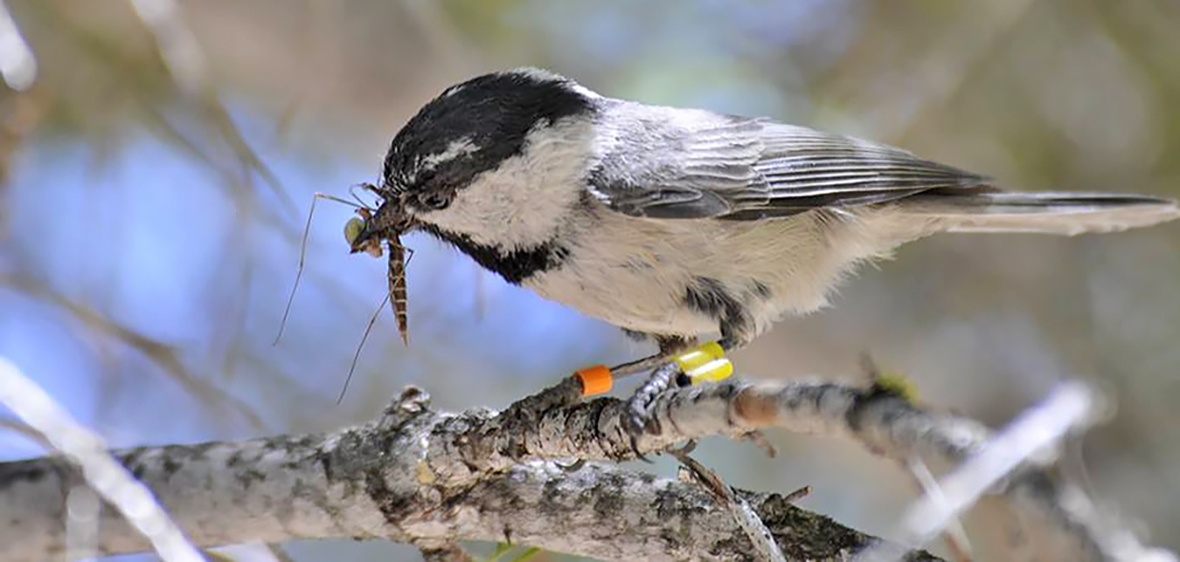
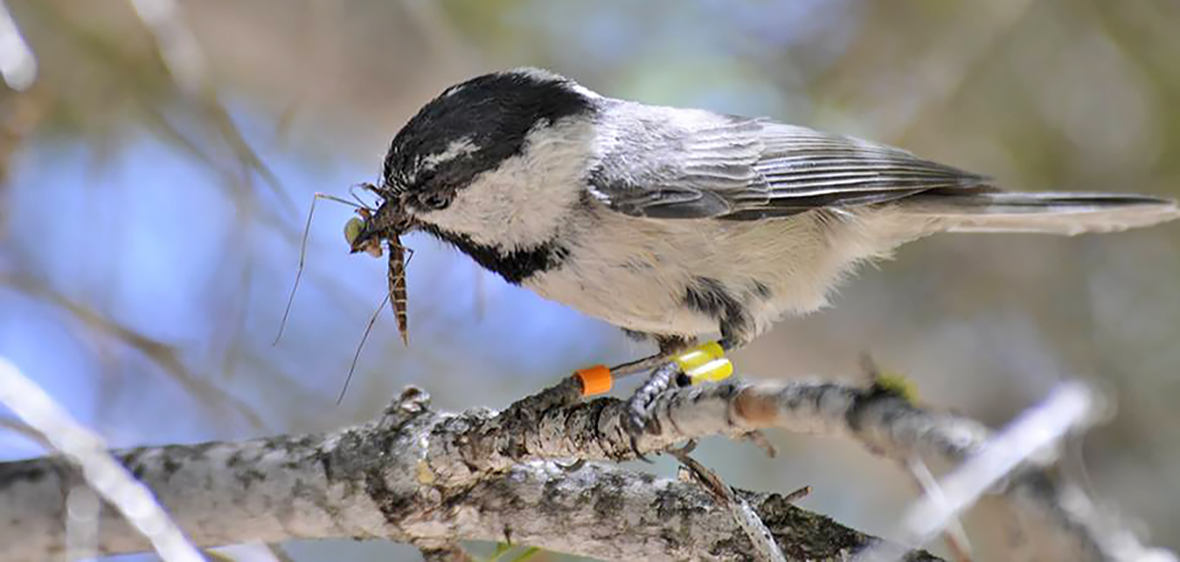
Chickadees with better learning and memory skills, needed to find numerous food caches, are more likely to survive their first winter, a long-term study of mountain chickadees has found.
Enhanced spatial cognition and brain power evolves via natural selection, an elaborate study of hundreds of mountain chickadees in the Sierra Nevada has found. Using passive integrative transponder (PIT) tags in combination with radio frequency identification-equipped feeders, scientists at the University of Nevada, Reno have tracked feeding behaviors and measured learning and memory of these non-migratory birds that live year-round in the high-elevation forest northwest of Truckee, California.
“This is a unique program, set in the wilderness, so we get unique results,” Vladimir Pravosudov, lead researcher and biology professor at the University’s College of Science, said. “Over the years, we’ve banded and tagged thousands of chickadees and observed their spatial cognition using custom-designed and built feeders that allow us to track how individuals learn and remember. And now we have tested whether individuals with better learning and memory performance are more likely to survive the winter.”
Ben Sonnenberg, a doctoral student in the laboratory of Pravosudov (as a part of the Ecology, Evolution and Conservation Biology Graduate program) is the lead author, and Pravosudov is a corresponding author, on a scientific paper, based on the research, published Feb. 7 in the journal Current Biology.
‘We’re looking at how natural selection can generate differences in the birds living in different environments, and we now have direct evidence that selection is acting on chickadees’ spatial cognition, which is needed to find tens of thousands of previously made food caches required to survive the winter,” Pravosudov said. “Our new evidence fully support our previous comparative studies showing that chickadees living in harsh winter conditions at high elevations have better memory and larger hippocampus, a brain structure associated with memory. Our new data show that better learning and memory in these birds at high elevations are due to strong natural selection.”
Pravosudov and his team of three graduate students visit their field sites near the University of California, Berkeley Sagehen Creek Field Station north of Truckee, California multiple times a week, year-round, including in some of the harshest Sierra Nevada winter weather. The field sites are about 40 miles from campus, so traveling during snowstorms is slow, and then they must use over-snow vehicles to go the last 10 miles to the high elevation site near Carpenter’s ridge, at about 8,300 feet in elevation, often blazing a trail through four feet of new snow.
“Results like these (about natural selection) make the long days of digging out snowmobiles, shoveling snow and programming our chickadee feeders from underneath a tarp in sleeting weather worth the effort twice over,” graduate student Sonnenberg said.
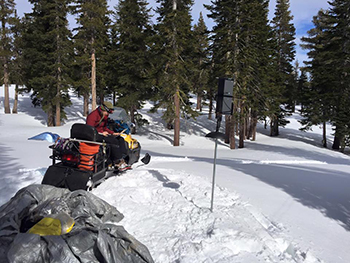
Four over-snow vehicles are used to transport the researchers and gear to their sites, and sometimes they have to ski to get there because their vehicles can’t get through the deep snow.
Their destination at high elevation is the centerpiece for this study, with two identical metal frameworks – arrays – that hold eight feeders each. Access to the feeders is regulated by RFID activated doors and the feeder arrays can be raised and lowered depending on the snow depth. The frameworks hang by cables between trees in the forest that reaches 8,300 feet above sea level. Two similar arrays are set up at their lower elevation study area about four miles away and a few thousand feet lower in elevation.
Each bird has its own PIT tag ID and the feeder doors can be programmed to let in whichever birds Pravosudov and his team decide. The data, such as number of visits by an individual bird to each feeder, the time of day they feed and what other chickadees they share the feeder with, are automatically recorded by RFID boards and stored on memory cards which need to be regularly retrieved to download the data.
By assigning each bird only one rewarding feeder, researchers are able to measure learning and memory by recording how many non-rewarding, or ‘wrong,’ feeders birds visit before they find their rewarding feeder. As birds learn, they are expected to stop visiting all but the rewarding feeder.
“It’s a simple system, we built it all in-house, with many design and build versions as we adapted them to the environment,” Pravosudov said. ”We collaborate with Dr. Eli Bridge from University of Oklahoma on RFID designs. Our feeders are field tested, needing to survive the elements and other animals – squirrels when the snow is deep, and bears all the time – who are looking to steal the bird seed from the experiment feeders. Bears have destroyed many feeders before we figured out how to avoid them.”
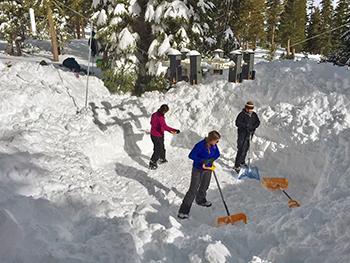
“We follow chickadees their entire lives; we get the whole big picture,” he said. “Mountain chickadees have an average lifespan of one and a half years, but our oldest is seven years old. The highest mortality occurs in juvenile birds during their first winter. Survivability is higher in adults once they survived their first winter because they are the ones who have better learning and memory abilities, allowing them to find where their food is cached. As much as 50 percent of the population dies off each year in the mountain environment; if they can’t remember well where their food is cached, they are not likely to survive.”
When comparing the juveniles who survived the first year to those who did not, learning and memory performance was better in those who survived. The research team also found that cognitive abilities remained stable as the birds aged.
The wild food-caching mountain chickadees don’t migrate, they stay mostly at the same sites they settled on after they dispersed from where they hatched. At the Sagehen forest, there are no birds that permanently moved between the researchers’ low and high elevation sites, which are six miles apart.
“We have banded several thousand chickadees over the years and we have never seen any birds permanently moving between elevations,” Pravosudov, who teaches animal behavior and behavioral ecology, said. ”These birds are easier to study because they are in one spot their entire life, dependent on food caches to make it through the harsh winters.”
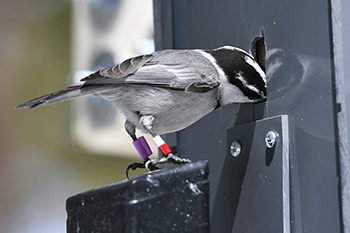
“The ability to track individual mountain chickadees throughout their lifetime in the Sierra Nevada mountains has been extremely exciting and rewarding,” Sonnenberg said. “I was drawn to UNR and Vladimir's lab because there is no other system like it.”
Vladimir has suspected for years that spatial memory is being shaped by natural selection and being able to take part in such a major step in confirming these ideas is extremely special, he said.
“Our results provide the first direct evidence for natural selection on spatial cognition in wild food-caching mountain chickadees,” he said. “Taken together, our results suggest that natural selection associated with environmental differences, like those in winter conditions between high and low elevations in the mountains, might be generating intraspecific differences in cognitive abilities. Our evidence suggests that natural selection, rather than some other potential variables that critics have said could be responsible for the results of earlier comparative studies inconclusive, is the main driver of such differences.”
The strongest supporting evidence comes from spatial learning and memory performance, as results from all three comparisons in the study are consistent with natural selection:
1. Adults showed better spatial learning and memory performance than first-year juveniles;
2. There was no significant difference in performance of the same cohort of chickadees that was first tested as first-year birds and then as adults, in other words they did not improve cognitive performance with experience; and
3. Spatial cognitive performance was a significant predictor of survival in first-year juvenile chickadees; birds that survived their first winter season showed significantly better performance in the spatial learning and memory tasks compared to birds that died.
Pravosudov received a National Science Foundation grant in 2014 to conduct this study. Two other NSF grants, one awarded to collaborator Eli Bridge and one awarded to Carrie Branch, were part of the funding for this project.
Co-authors on the scientific paper in Current Biology are Benjamin Sonnenberg, University of Nevada, Reno; Carrie Branch, former doctoral student at the University of Nevada, Reno and now a postdoc at Cornell Lab of Ornithology; Angela Pitera, University of Nevada, Reno; and Eli Bridge, University of Oklahoma, Oklahoma Biological Survey.
Pravosudov’s is currently the only lab in the world that carries systematic study of spatial learning and memory in wild food-caching birds in extreme environmental conditions.
He’s been studying mountain chickadees in the Sierra since 1999 starting as a post-doc at the University of California, Davis. Before that, he studied European food-caching tits (related to North American chickadees) above the Arctic Circle in northern Russia and then in North Eastern Siberia. Pravosudov’s lab has published 21 papers about chickadees since 2015, with more in the pipeline. His curiosity and drive to learn more continues today.
“We now have DNA of all the birds we’ve banded, so next we are collaborating on genomics projects to investigate genomic bases of variation in learning and memory; maybe this summer we’ll have a paper on our findings using full genomes of numerous chickadees with known learning and memory performance,” he said.
He is a fellow of the American Ornithological Society, recognizing his “exceptional and sustained contributions to ornithology” and an elected fellow of the Animal Behavior Society.
For more news on the University of Nevada, Reno, follow @unevadareno on Twitter.
Click here to view full article